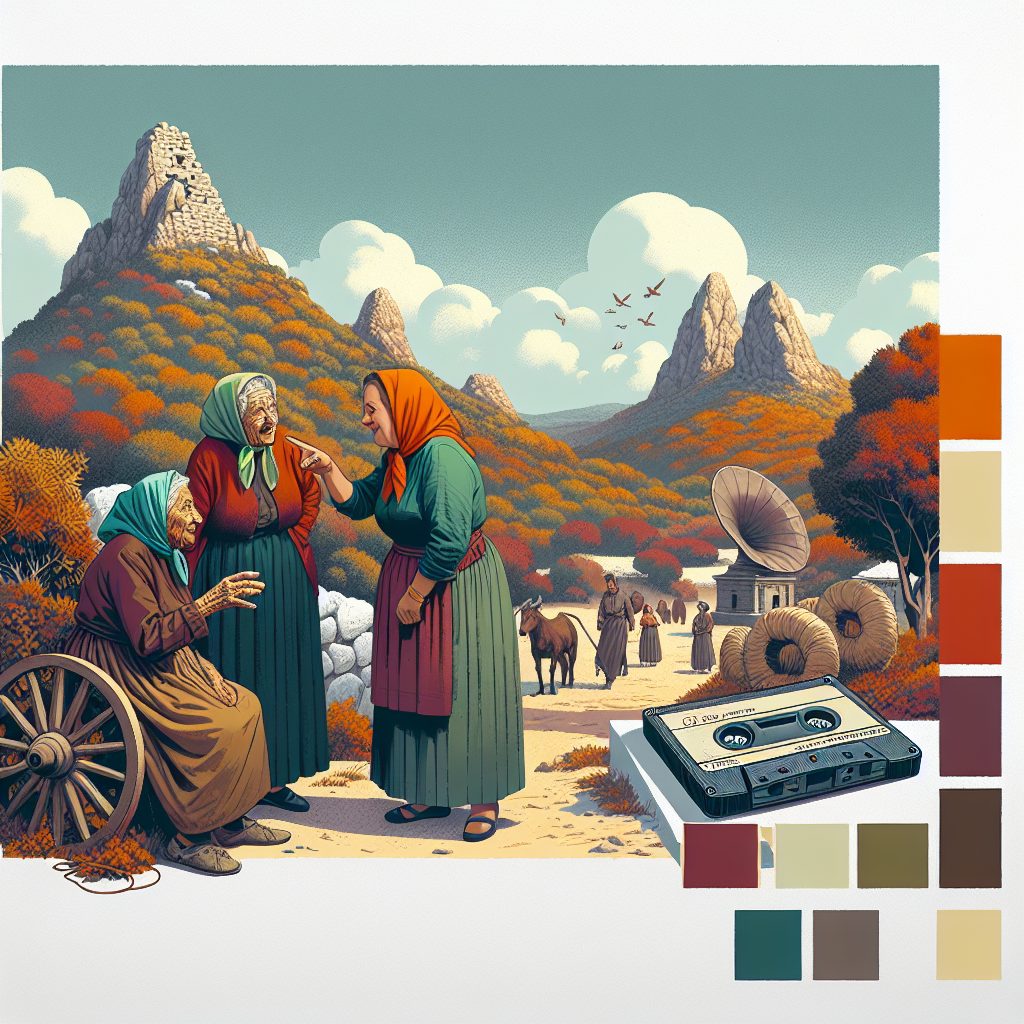Sardinian language traditions are deeply rooted in the vibrant culture of the Italian island of Sardinia. With its distinct dialects and linguistic variations, the Sardinian language showcases a rich heritage that spans over millennia. The Sardinian language is a unique blend of influences from various civilizations and cultures that have shaped the island’s history, including Phoenician, Roman, Byzantine, and Spanish. This linguistic diversity reflects the island’s historical importance as a crossroads for trade and conquest.
One of the key features of Sardinian language traditions is its resilience and ability to preserve ancient vocabulary and grammatical structures. Despite the influences of other languages, Sardinian has managed to retain its distinct linguistic identity. This linguistic preservation is particularly evident in the various dialects spoken in different regions of Sardinia, each showcasing a fascinating linguistic tapestry. Additionally, Sardinian language traditions provide valuable insight into the island’s history and cultural practices, as many traditional songs, poems, and oral histories are passed down through generations in this unique language.
In the upcoming sections of this article, we will explore the key takeaways from Sardinian language traditions. We will delve deeper into the various dialects and linguistic variations that make up the Sardinian language and discuss how these traditions have influenced the island’s cultural practices. Furthermore, we will explore the efforts made to preserve and promote Sardinian language traditions in the face of modernization and globalization. By understanding the significance of Sardinian language traditions, we can gain a deeper appreciation for the rich cultural tapestry of Sardinia and its enduring linguistic heritage.
Key Takeaways
1. Sardinian language traditions are an integral part of the island’s cultural heritage and are fiercely protected by its inhabitants.
2. The Sardinian language, with its various dialects, dates back thousands of years and is one of the oldest spoken languages in Europe.
3. Despite government efforts to promote the use of standard Italian, Sardinians maintain a strong sense of identity and pride in their linguistic diversity.
4. Sardinian language traditions are kept alive through various cultural expressions such as traditional music, literature, and festivals.
5. Linguists and scholars recognize the importance of preserving Sardinian language and traditions as a means to better understand the island’s history, culture, and unique linguistic features.
What are the Key Aspects of Sardinian Language Traditions?
Sardinian Language Overview
The Sardinian language is a Romance language spoken mainly in the region of Sardinia, Italy. It has a rich historical and cultural background, with influences from different civilizations throughout its existence. Understanding the key aspects of Sardinian language traditions is crucial to appreciating its uniqueness and preserving its heritage.
Language Varieties
The Sardinian language boasts several linguistic varieties, each with its own distinct features and characteristics. These varieties are grouped into two main macro-regional groups: Logudorese, spoken in the northern half of Sardinia, and Campidanese, spoken in the southern half. Despite these regional differences, they are all considered part of the Sardinian language family.
Oral Tradition: Poems and Songs
Oral tradition has played a significant role in shaping Sardinian language traditions. Ancient forms of poetry like the cantu a chiterra (guitar songs) and the gosos (religious songs) are still performed today. These songs often depict Sardinian history, love, and hardship, and are a way of passing down cultural heritage from generation to generation.
Written Tradition: Literature and Poetry
Sardinian language traditions also have a strong written tradition, with notable authors and poets contributing to the development of Sardinian literature. From traditional folktales and epic poems to contemporary novels and poetry, Sardinian writers embrace their language as a means of artistic expression. This literary tradition helps preserve the cultural identity of the Sardinian people.
Language Preservation Efforts
Given its unique status within Italy, the preservation of the Sardinian language has been a topic of great concern. Various organizations and institutions have been working tirelessly to safeguard and promote the Sardinian language and its traditions. Efforts include language courses, cultural events, and the creation of dictionaries and educational resources. These initiatives aim to ensure the continuity of the Sardinian language for future generations.
Impact of Globalization
Like many minority languages, Sardinian faces challenges in a globalized world. The influence of the Italian language, as well as other global languages, has led to a decline in the number of Sardinian speakers. Additionally, modernization and urbanization have contributed to the erosion of traditional dialects. Recognizing these challenges, there is an ongoing need to raise awareness and support for the preservation of Sardinian language traditions.
Revitalization Initiatives
Despite the challenges, there is a growing movement to revitalize the Sardinian language. Local communities, cultural associations, and language activists are actively involved in promoting the use of Sardinian in various domains, such as education, media, and the arts. Through these initiatives, Sardinian language traditions are being celebrated and preserved, helping to maintain the linguistic and cultural diversity of the region.
What are some tips for preserving Sardinian language traditions?
- Immerse yourself in the language: Engage with Sardinian language resources, such as books, music, and online content, to improve your understanding and fluency.
- Attend cultural events: Participate in local festivals and gatherings where Sardinian traditions, including the language, are celebrated and shared.
- Support language education: Encourage the inclusion of Sardinian language courses in educational institutions and consider enrolling in these programs yourself.
- Use Sardinian in daily life: Incorporate Sardinian phrases and expressions into your daily conversations, both in-person and online.
- Document oral history: Collect and record oral traditions, stories, and songs from older generations to preserve them for future reference and research.
- Collaborate with language activists: Join forces with local language activists and advocacy groups to support their efforts in promoting and preserving Sardinian language traditions.
- Share on social media: Utilize social media platforms to raise awareness about Sardinian language and traditions, sharing relevant content and encouraging dialogue.
Frequently Asked Questions
1. Why is the Sardinian language considered unique?
The Sardinian language is considered unique due to its distinct linguistic characteristics and its historical isolation from other Romance languages. It has retained numerous archaic features, making it a fascinating linguistic treasure.
2. How many dialects of Sardinian exist?
There are various dialects of Sardinian, which can be broadly classified into two main groups: Campidanese and Logudorese. These groups further include multiple sub-dialects, each with its own peculiarities and variations.
3. Are Sardinian traditions influenced by the language?
Absolutely! The Sardinian language heavily influences the island’s rich cultural traditions. It is interwoven in folk music, traditional dances, poetry, and even specific customs and celebrations. The language plays a crucial role in preserving and transmitting these invaluable traditions.
4. How has the Sardinian language survived throughout history?
The resilience of the Sardinian language can be attributed to the strong attachment of Sardinians to their linguistic heritage and the rural isolation of the island. Despite past attempts to suppress it, the language has endured thanks to the collective pride and efforts of the Sardinian people.
5. Is Sardinian considered an endangered language?
Sardinian is classified as a vulnerable language by UNESCO, indicating the need for active preservation measures. The increasing influence of Italian and globalization poses challenges, but ongoing revitalization efforts aim to safeguard its future.
6. Can I learn to speak Sardinian?
Absolutely! Learning to speak Sardinian is an enriching experience. While there are limited resources available compared to more widely spoken languages, language courses, online platforms, and language exchange programs can help aspiring learners
7. Is Sardinian taught in schools on the island?
Yes, Sardinian is taught in some schools on the island, mainly in areas where the language is more prevalent. However, its inclusion in the educational system varies, and efforts to promote its teaching are ongoing.
8. Are there any written works available in Sardinian?
Yes, there is a rich literary tradition in Sardinian. Numerous books, poems, and other works have been written in the language over the centuries. Today, there is an ongoing effort to publish more contemporary literature and expand literacy in Sardinian.
9. Are there any similarities between Sardinian and other Romance languages?
While Sardinian has similarities with other Romance languages due to its roots, it has retained many unique features that distinguish it from its regional counterparts. It exhibits archaic elements that resemble the Latin spoken during the Roman Empire.
10. Can Sardinian be used in day-to-day conversations?
Yes, Sardinian is still spoken in daily conversations by many locals, particularly in the rural areas. Although Italian is commonly used in urban centers, Sardinian persists as a significant part of the island’s cultural identity.
Final Thoughts
Exploring the Sardinian language traditions is like embarking on a captivating journey through history and culture. From the variety of dialects to its profound influence on local customs, this linguistic gem showcases the resilience and pride of the Sardinian people. By cherishing and continuing to preserve this language, we ensure that its rich traditions continue to flourish and leave an indelible mark on our collective heritage.
In an era of increasing homogeneity, retaining and celebrating linguistic diversity is of utmost importance. Sardinian language traditions offer a unique glimpse into a world shaped by centuries of intricately woven influences and provide a valuable window into the island’s past and present. Let us embrace this linguistic tapestry and honor the generations that have safeguarded it, nurturing its vitality in the face of modern challenges. Together, we can ensure the timeless beauty and importance of Sardinian language traditions endure for generations to come.






